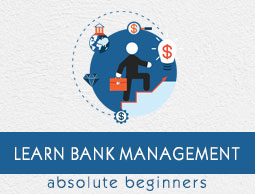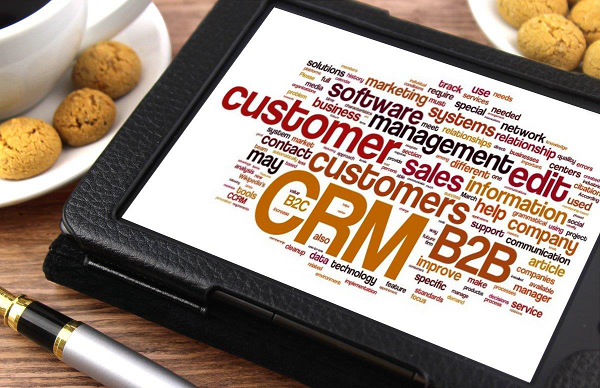
- Bank Management – Home
- Bank Management - Introduction
- Bank Mngmt - Commercial Banking
- Commercial Banking Functions
- Commercial Banking Reforms
- Bank Management – Liquidity
- Liquidity Management Theory
- Liabilities Management Theory
- Bank Management – Basle Norms
- Bank Mngmt – Credit Management
- Formulating Loan Policy
- Bank Mngmt – Asset Liability Mngmt
- Bank Mngmt – Evolution Of ALM
- Bank Mngmt – Risks With Assets
- Risk Measurement Techniques
- Bank Management – Bank Marketing
- Bank Mngmt – Relationship Banking
Bank Management - Relationship Banking
Relationship banking can be defined as a process that includes proactively predicting the demands of individual bank customers and taking steps to meet these demands before the client shows them. The basic concept of this approach is to develop and build a more comprehensive working relationship with each and every client, examining his or her individual situation, and making recommendations for different services offered by the bank to help develop the financial well-being of the customer.
This approach is mostly linked with smaller banks that use a more personal approach with customers, even though an increasing number of large bank corporations are beginning to motivate similar strategies in their local branches.

At the base of relationship banking is the thought that the foundations and the individual customer are partners with a goal of developing the financial security of the customer. Due to this reason, the client support representatives within the bank are frequently pursuing to acknowledge what customers like and dont like about the services offered by the bank, how they are presented, and how to identify the services that are likely to be beneficial to each customer.
This type of proactive approach is completely different from the reactive approach used by many banks over the years, in which the bank critically builds its suite of services and the qualifications for acquiring them. After which it waits passively for customers to approach them. With relationship banking, the representatives of the foundations dont wait for customers to come to them instead, they go to the customers with a plan of action.
Improving Customer Relationships
We cannot expect active participation from the customers side in a day, week or a month. It is the base level of building a relationship that needs trust, dialogue, a steady growth in service ownership and a growth in share of wallet if done correctly. The substitute to concentrating on establishing customer engagement is a relationship that does not satisfy its full potential or customer attrition.

Research suggests that the concrete advantages of a completely engaged customer, who is attitudinally loyal as well as emotionally attached to the bank is very important. The following measures can be followed to build and enhance relationship with customers −
Increased Revenues, Wallet Share and Product Penetration
Customers who are completely involved bring $402 in additional revenue per year to their primary bank as measured with those who are actively not involved, 10% greater wallet share in deposit balances and 14% greater wallet share in investments. Completely involved customers also average 1.14 additional product categories with their primary bank than do customers who are actively not involved.
Higher Purchase Intent and Consideration
Actively involved customers not only acquire more accounts at their primary bank, but also look to that same bank when thinking of future requirements. Nowadays, when almost everything is done online developing banks chances of being in the customers consideration set is essential.
Becoming a Financial Partner
Less concrete, but no less important. An actively engaged customer establishes a settlement with their bank or credit union that every financial foundation would covet.
We have seen how to improve customer bond. Another major aspect is to understand the guidelines on how the bonding with the customer can be made stronger. This can be done in the following ways −
Improve Acquisition Targeting
Customer engagement begins even before a new customer opens an account. The advanced technology today makes it possible to find new prospects that are identical to the best customers who have their accounts at a financial foundation.
The creation of an acquisition model monitors the product usage, financial behavior and relationship profitability, opening accounts with limited potential for involvement or growth is minimized.
Change the Conversation
Let us say breaking the ice or starting a communication or interacting with customers is one of the key elements to building an engaged customer relationship. This relationship bonding starts with the conversation during the process of account opening. To develop trust, the conversation must stress on confirming that the customer believes that you are genuinely interested in knowing them, are willing to look out for them and after due course of time, they will be rewarded for their business or loyalty.
This initial interaction requires concentrating more on capturing insight from the customer and figuring out the value different products and services will have from the customer point of view as opposed to simply considering features.
The aim is to demonstrate to the customer that the products and services being sold must satisfy their unique financial and non-financial requirements.
Unfortunately, research shows that most of the branch personnel have problems in dealing with customers around requirements and the value of services provided by an enterprise. In simple words, having an enterprise grasp of product knowledge is not sufficient. Initially, the enterprise should concentrate on sales quality as opposed to sales quantity.
Some financial foundations have started using iPads to collect insight directly from the customer. While seeming less personal, an iPad new account questionnaire sets a standard collection process and basically is able to collect far more personal information than the bank or credit union employee are comfortable in collecting.
Communicate Early and Often
It is quite alluring how banks and credit unions set goals and objectives for broadening a customer relationship and involvement and then build arbitrary rules around interaction frequency and cadence.
It is not uncommon for a bank to minimize the number of interactions to one a month or less inspite of the fact that a new customer is expressing the desire for more interaction as part of their new relationship.
Research suggests that the optimum number of interaction messages within the first 90-day period from both a customer satisfaction and relationship growth point of view is seven times beyond different communication channels.
Personalize the Message
Studies show that more than 50 percent of actively involved customers get mis-targeted interaction.
Basically, this involves talking about a product or a service the customer already possesses or regarding a service that is not in sighting with the insight that the customer has in mutual with the foundation.
Presently, customers expect well targeted and personalized interacting sessions. Anything less than this makes them lose their trust on the banks. This is mostly true with financial services, where the customer has provided very personal information and expects this insight to be used only for their benefits.
To establish proper engagement, it is best to involve service sales grid that reflects what services should be underlined in interaction, given present product ownership. Involvement communication is not a free size that fits all dialogue. It should show the relationship in real-time.
Build Trust before Selling
To establish proper engagement, it is best to involve service sales grid that reflects what services should be underlined in interaction, given present product ownership. Involvement communication is not a free size that fits all dialogue. It should show the relationship in real-time.
If a customer opens a new checking account, then the services that should be discussed are as follows −
- Direct Deposit
- Online Bill Pay
- Online Banking
- Mobile Banking
- Privacy Protection/Security Services
- Benefits
Acknowledging customers beyond additional enhancements to a checking account that can further help in constructing an engaging relationship involve −
- Mobile Deposit Capture
- Rewards Program
- Account to Account Transfers
- P2P Transfers
- Electronic Statements
- Notification Alerts
All along this relationship growth process, supplementary insight into the customers requirements should be assembled whenever possible with personalized communication expressing this new insight.
Reward Engagement
Unfortunately, in banking the concept of if you construct it, they will come doesnt work. While we may construct great products and supply new, innovative services, mostly customers need supplementary motivation to utilize a product optimally and for engagement to grow the way we would desire.
The outcome is, mostly proposals are required to provoke the desired behavior. In the development of proposals, banks and credit unions should make sure that the proposal should be established on the products already held as opposed to the product or service being sold.
Exclusively in financial services, a customer doesnt completely understand the advantages of the new service. Thus, if the new account is a checking account, the proposal should be one that limits the cost of the checking, supplies an extra benefit to the checking or strengthens the checking relationship.
Potential proposals may involve waived fees or optimally improved stages of rewards for a precise action or limited duration. The advantage of using rewards would be that a reward program is a strong engagement tool itself.
Gear to the Mobile Customer
We know direct mail and phone are highly effective methods used for constructing an engaging relationship. The use of email and SMS texting has led to progressive outcomes due to mobile communication consumption patterns.
Recently the reading of email on mobile devices exceeded desktop consumption highlighting that most messages should be geared to a consumer who is either on the go or multi-tasking or both.
To interact with the mobile customer, email and SMS texting must be a point to point that is one on one conversation. The customer does not wish to know everything about the account, all that he wants to know is what is in it for them and how do they react. As links should be used to support supplementary product information if it is required a single click option should be available to say yes.
With respect to these links, many financial foundations have found that using short form videos is the best way to produce understanding and response. Brilliant videos around online bill pay, mobile deposit capture and A2A/P2P transfers not only educate people but immediately link to the yes button to close the sale.
It is very necessary to remember that the video should be short like under 30 seconds and constructed for mobile consumption first when using educational sales videos. As a video constructed for mobile will always play well on larger devices, the opposite is basically not true. Mobile screen needs to be focused more as nowadays everything is done on phones itself and its not possible to carry a desktop everywhere. Also the customer will not always bother to check the links and videos in their desktop.